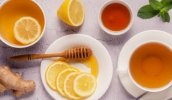Perhaps, the most common concern that breastfeeding mothers have is what to do when breastfeeding causes pain and discomfort. The answer to this depends on the reason why breastfeeding hurts. Often it is your baby isn’t latched on to your nipple properly which can cause sore, cracked nipples and blisters. Your health visitor, midwife or breastfeeding supporter can help resolve this problem by checking how your baby is latching on. But there are other problems which can occur with breastfeeding.
The most common of these are listed below together with suggestions for what to do.
Engorgement: This is when your breasts become hugely swollen and feel very uncomfortable and hard. This usually happens between the third and fifth day after your baby is born, when your mature milk comes in. It can also happen when you stop breastfeeding if you do so too abruptly – the weaning process needs to happen gradually.
What to do
Although it may be painful, you need to keep on feeding your baby as much as possible to reduce the swelling. Your breasts should start to feel better within a couple of days. You can take paracetamol or ibuprofen painkillers without harming your baby. Check your baby is latching on properly. If your breasts have got so large that your nipples have flattered, try expressing some milk to relieve the swelling. A popular remedy which has been used successfully for centuries to reduce the swelling is to apply refrigerated cabbage leaves to your breast! Put the leaves inside your bra, making sure you have covered your breast completely, and leaves for up to half an hour or whenever the leaves have wilted. Repeat as necessary until the swelling has gone down.
Blocked milk ducts: Your milk ducts can become blocked – forming a small painful lump in your breast and causing inflammation – if your baby doesn’t completely empty your breast of milk when she feeds.
What to do
This shouldn’t happen if you are feeding often and making sure that your baby finishes one breast before starting another. Vary your feeding positions so that your baby is more able to remove the milk from all your milk ducts. Avoid wearing anything too tight around your breast, including an underwired bra. Massage your breast as you feed your baby to help unblock the duct. Also, try applying a warm flannel or cloth to your breast for a few minutes before you feed.
Mastitis: if a blocked duct becomes infected it can lead to mastitis which is sometimes extremely painful. This bacterial infection can cause your breasts to become swollen, red and lumpy and is accompanied by flu-like symptoms and a high temperature. Occasionally mastitis can lead to an abscess, which is a more severe form of infection where pus forms in your breast. This will require urgent medical attention.
What to do
Taking ibuprofen reduces the inflammation, relieves pain and reduces the temperature. Take 400mg three times a day after food paracetamol also relieves pain and reduces temperature but has no anti-inflammatory action. Take two 500mg tablets four times a day, antibiotics may be needed if mastitis is due to a bacterial infection. To help avoid developing mastitis, follow the advice for blocked milk ducts.
Thrush: This is a fungal infection that can affect both mother and baby. It is also known as candida. You may notice white spots on your breast and in your baby’s mouth, which makes feeding uncomfortable. Your baby may also get a nasty case of nappy rash, and you may feel sharp shooting pains deep in your breasts, which may also feel itchy. It often appears after a course of antibiotics and can spread from mother to baby via breastfeeding.
What to do
Your doctor will prescribe an antifungal cream for both of you, which should clear up the problem quickly. You do not need to give up breastfeeding. However, it is important that you are both treated at the same time to prevent you from reinfecting each other. There are a number of things you can do at home which should ensure that thrush doesn’t recur.
- The infection thrives in damp, warm places so change your nursing pads after every feed and change your baby’s nappy frequently.
- Wash your hands before and after each feed.
- Use a separate towel for each person in the family.
- Eat 145ml of live yoghurt a day – it contains fungus – destroying probiotics.
- Ask your partner to be tested because the infection can easily be transmitted.
Teeth: A common concern for many mothers is how to breastfeed a baby with teeth. Will she bit? And, if so, how do you stop her? The average age for a baby to start teething is six months. Although some mothers will have stopped breastfeeding by then and may have weaned their baby onto solids and cup-feeding, many mothers are still breastfeeding. Lots of babies with teeth don’t ever bite their mothers – but there are some that do. If this happens once, you want to make sure it doesn’t happen again.
What to do
If your baby is teething she may be suffering from sore gums and will chew on everything in sight. In the hope that she doesn’t chew you, try giving her a teething toy to chew on before or after you feed her. If this doesn’t work, however, and your baby does bite you, she needs to get the firm message not to do it again. If you react to her bite with a loud noise; this may shock her into not doing it again. However, it could make her curious to see if she gets the same reaction a second time. Stop feeding her at the same time as saying ‘no’ firmly. You can finish the feed by offering her water or juice in a baby cup and try breastfeeding again later.










Comments